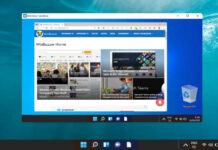1 How to Open the Windows 11 Touch Keyboard2 How to Change Touchscreen Keyboard Size and Theme3 How to Change the Virtual Keyboard Layout in Windows 114 How to Create Custom Touch Keyboard Themes?5 How to Lock or Unlock Your Keyboard6 How to Remap Keys on Windows 11
Strangely, though, Microsoft doesn’t make it very easy to open the keyboard on your screen in Windows 11 and Windows 10. Though it does pop up automatically if you’re using a touch device, it doesn’t always appear in every situation you’d like. As a result, we’ll be showing you how to add an icon to your taskbar so that you can access it with a single tap. This should prevent you from having to jump through settings windows just to get your keyboard up. What’s the difference between the Windows 11 touch keyboard and the on-screen keyboard? Though they’re often referred to by the same name, the Windows 10 / Windows 11 touch keyboard and the on-screen keyboard are two different things. The on-screen keyboard is a re-skinned legacy keyboard with fewer features, worse performance, and an uglier UI. The touch keyboard is a more modern implementation. As there’s no real reason to use the Windows 10 / Windows 11 on-screen keyboard over the touchscreen keyboard unless it’s for accessibility reasons. The on-screen keyboard lets you input text by scanning or hovering over keys, which makes it a good choice for those who struggle with traditional keyboards. With that said, here’s how to open the keyboard on your screen in Windows 11:
How to Open the Windows 11 Touch Keyboard
How to Change Touchscreen Keyboard Size and Theme
How to Change the Virtual Keyboard Layout in Windows 11
How to Create Custom Touch Keyboard Themes?
How to Lock or Unlock Your Keyboard
If the Settings icon isn’t pinned for you, you can press Start + I on your keyboard instead.
Optionally, you can also toggle the key background. This is the white square around your keys that helps you to identify where one starts and ends.
The default keyboard has most of your normal keys but compacts them, removing the up and down arrow keys and hiding some symbols behind the shift key. The small keyboard is more akin to what you’d see on a smartphone. It takes up much less screen space and only a very basic set of symbols. The traditional keyboard option should be closest to what you have on your desk or laptop – minus the number keys.
If the reason for you using a virtual keyboard is that your current one isn’t working, it may be worth considering whether it’s locked. This is particularly true if you’re using a laptop, where there’s often a dedicated lock button. For more information, you can read our full how to lock or unlock a keyboard guide.
How to Remap Keys on Windows 11
If the touchscreen keyboard layout options still don’t work for you, can remap your keys to whatever you like. Our how to remap keys on Windows 11 guide will show you exactly how. These changes will apply to both physical and touch keyboards.




